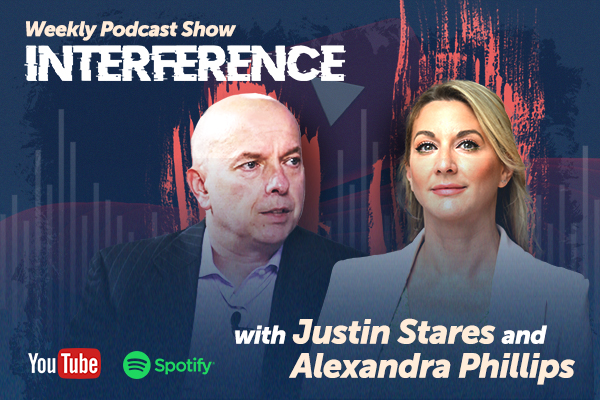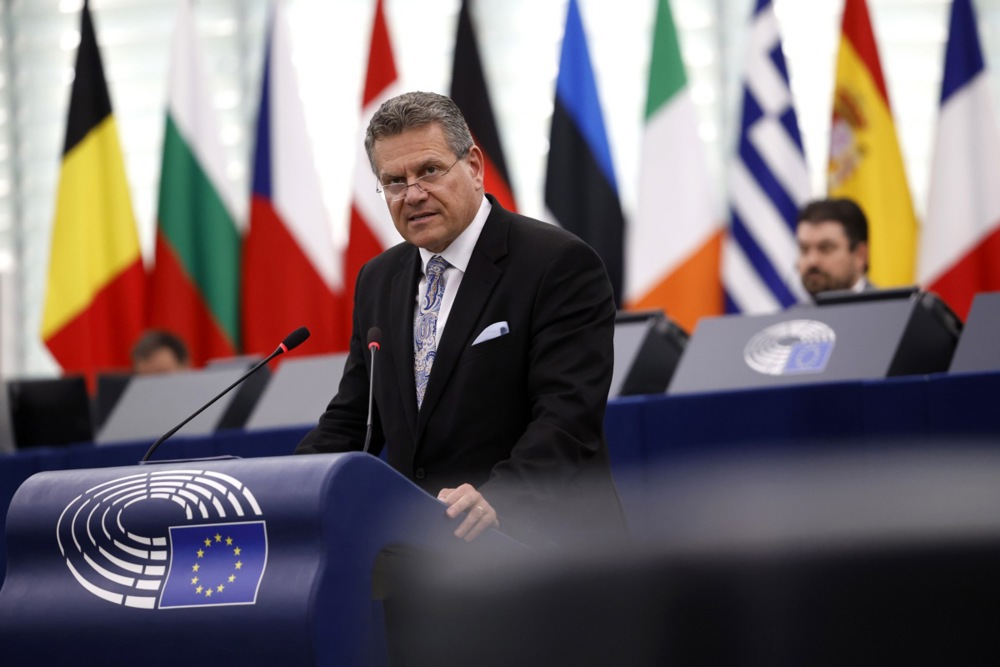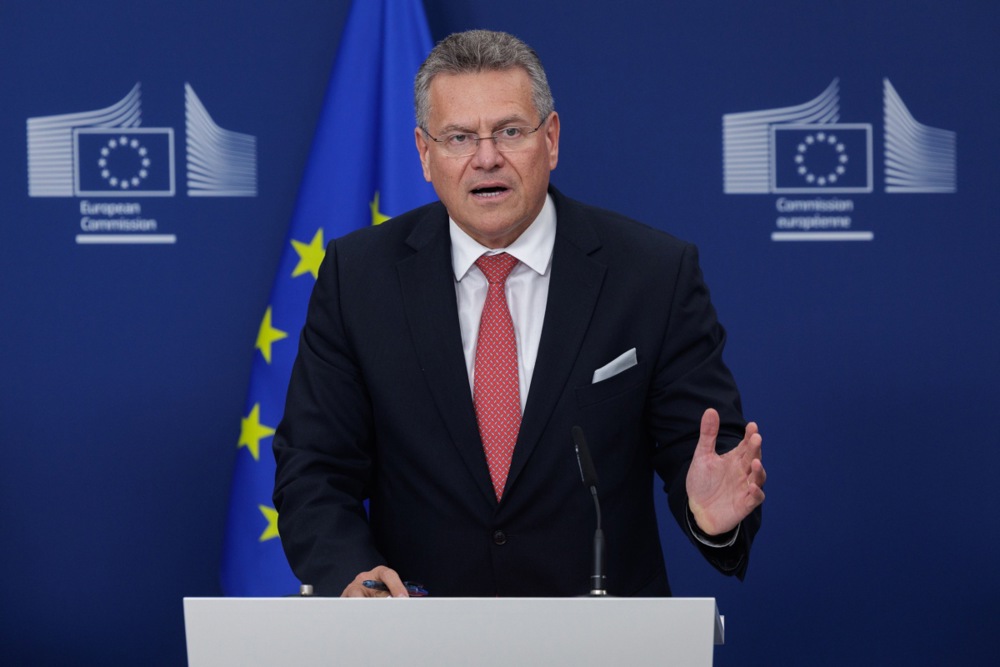Despite US President Donald Trump’s claim that “Europe will pay,” evidence suggests US businesses and consumers will be footing the bill for the newly agreed 15 per cent US tariff on European Union imports.
“The 15 per cent tariff on imports from the EU will be paid by Americans,” Bryan Riley, trade economist at the American Taxpayer Union told Brussels Signal on July 28.
He added that the tariff would also hurt US exporters, since “Europeans will sell less to the United States, leaving them with fewer dollars to buy our exports”.
The tariff was part of a broader agreement reached in Scotland on July 27 that was intended to avert a higher rate.
According to Commissioner for Trade and Economic Security Maroš Šefčovič, who was present as the deal was agreed, negotiations began with a proposed 30 per cent tariff, “that would have practically put all trade on hold”.
He said the final outcome “saves the jobs, saves the trade flows” and reflected “a better understanding of each side’s sensitivities”.
The agreement has imposed a flat 15 per cent tariff on most European goods entering the US, with some sectors exempt under a “zero-to-zero” tariff scheme.
Šefčovič called the result “clearly the base deal we could get under very difficult circumstances” and pointed to new opportunities for co-operation on re-industrialisation, critical minerals and technology.
Philippe Gijsels, chief strategist at Belgian bank BNP Paribas Fortis, told Brussels Signal on July 28 that it was “technically speaking” US importers who would pay the tariff to the US Government.
He said the cost was likely to be shared between companies and consumers depending on how much pricing power firms have, and that “European exporters … do suffer” indirectly, through weaker demand or the need to lower prices.
Peter Vanden Houte, chief economist at ING, told Brussels Signal that European exporters “have barely lowered their prices to offset the tariff.”
He estimated that “about 80 per cent” of the cost would be paid by US firms or consumers. “Some companies have made concessions,” he said, “but certainly not for the full amount.”
He stated it was “not a good deal” although he added it may bring some stability.
Deutsche Bank analysts also found that the tariff’s cost had so far been absorbed mostly in US company profit margins. In a note dated July 22, the bank said inflation pressure was likely “in the pipeline” even if consumer prices had only risen modestly so far.
They added that exporters abroad “are not yet feeling much pain”.
Still, Trump continued to frame the policy as a tax on foreign producers. Riley said this portrayal was misleading and that what mattered was not just who legally paid but who ultimately bore the cost.
That burden, economists suggested, was moving through the US supply chain. The Yale Budget Lab results, reported on July 29 by The Guardian, estimated that Trump’s tariffs had already led to a 1.8 per cent increase in US prices, equivalent to around $2,400 (€2073) per household.
While Trump has floated using tariff revenue for possible consumer rebates, he has continued to assert that “Europe will pay”.
The political messaging has also obscured the fiscal implications. Bernd Lange, Chair of the European Parliament’s trade committee, said in a press statement sent to this website that “the US’ real interest is to generate additional revenue for the budget through tariffs.” He noted that the US Treasury Secretary had announced $27 billion (€23.32 billion) in added revenue this year alone.
In Europe, the economic consequences are smaller but not irrelevant. The Kiel Institute for the World Economy, a German research centre that provides economic forecasts for policymakers, estimated the deal would reduce German GDP by 0.13 per cent and French GDP by 0.01 per cent.
The institute also warned that some industrial sectors could face deeper disruption.
Cecilie Bonefeld-Dahl, director general of Digitaleurope, which represents digital technology industry at the EU, wrote that “the agreed 15 per cent tariff cap, while lower than previously feared, remains a significant burden on both economies”.
She said the focus should now shift to restoring competitiveness and collaboration. “This cannot be seen as a win for either side.”
Lange called the agreement “not a masterpiece of negotiation” and warned that it would “contribute to weakening the European Union’s economic development”. He also criticised other elements of the broader package, including EU commitments to purchase more US energy and military technology.
Šefčovič, by contrast, emphasised shared long-term goals. Speaking to journalists, he said both sides were “very clear” that they want to re-industrialise and secure access to critical inputs.
He described the EU and US economies as “complementary” and said new collaboration in artificial intelligence, steel and rare metals could strengthen both sides against external shocks, particularly from Chinese overcapacity.
Experts, though, said the deal remained uneven. The zero-tariff provisions mostly benefit US aerospace and tech exports. Most European sectors remain subject to the 15 per cent rate. Vanden Houte told Brussels Signal that, while the logic may be strategic, “there are enough studies showing that trade tariffs destroy prosperity for the global economy in general”.
For now, Europe has avoided escalation — but also accepted a new normal. Riley said the tariff still faced legal challenges and may ultimately be overturned by the US Supreme Court.
Until then, businesses on both sides of the Atlantic have been adjusting to a trade relationship in which tariffs are no longer an emergency threat but part of the operating environment.
The White House published a fact sheet on July 28 presenting the agreement as a victory for US trade policy. It described the 15 per cent tariff as a fair and, as Trump has been doing since he started introducing the concept of “Liberation Day” at the beginning of his term, “reciprocal” correction to what it called longstanding imbalances in transatlantic trade.
Such reciprocality was questioned when the US administration introduced the initial 20 per cent flat rate tariff. It was further questioned when these were lowered to 10 per cent for a 90-days pause and when the pause length was altered, and a new rate of 30 per cent came up.
During these developments, the EU did not change its own tariff rates, the ones that “triggered” the “retaliatory response” from the US.
The White House document emphasised US leverage and positioned the outcome as part of a broader effort to reassert US control over trade flows and reduce reliance on foreign supply chains.
By contrast, European officials have characterised the agreement as a necessary compromise to avoid a more damaging outcome, framing the 15 per cent rate not as a win but as a stabilising measure to preserve jobs and prevent a 30 per cent tariff that had originally been proposed.





